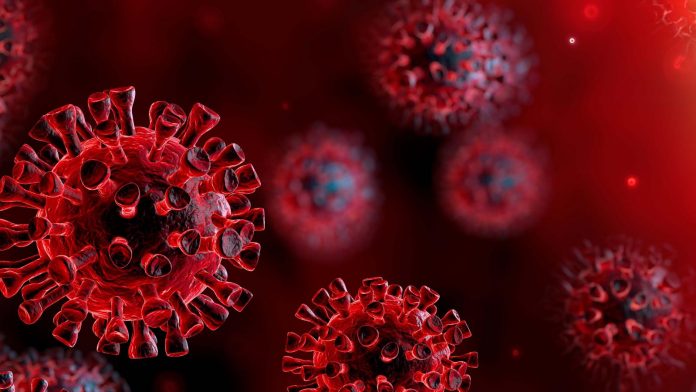Hello Folks!
We hope you all are safe and following Covid-19 precautions. If not, please start following all the precautions. India is witnessing the Second Wave of Coronavirus. Since this is an alarming issue, we are here with a comprehensive article on the ‘Second Wave of Coronavirus’.
Table of Contents
Second Wave: The Rise in Cases of Coronavirus
There is a sudden spike in the number of covid cases. This is indicative of the fact that India is in the grip of the second wave of coronavirus. The second wave that started in mid-February seems to reverse the progress made against the pandemic. On March 23, India reported 59,074 new Covid-19 infections. This is the highest in a single day since October 17, or in 159 days.
The country’s second Covid-19 wave continues to push daily case numbers. The number of cases has gone up to levels not seen since November when the first wave was brought under control. The second wave is considered more intense. According to SBI’s report, the duration of the second covid-19 wave in India might last up to 100 days.
India’s 2nd Covid wave may last up to 100 days: SBI Report
According to the report, the second wave of COVID-19 cases in India can last up to 100 days from February 15. Approximately 25 lakh cases are expected in the country. Here is the summary of the report:
- District-wise analysis reveals that cases have started increasing again in the top 15 districts, mostly urban, while the spread in rural districts is almost stable: Shift in rural penetration from Kerala in Jan’21 to Maharashtra in Mar’21.
- Certain states like Rajasthan, Gujarat, Kerala, Uttarakhand, Haryana have vaccinated more than 20% of their elderly population (above 60 years).
- Several states with a higher elderly population (>60 years) including Punjab, Tamil Nadu, Andhra Pradesh, Maharashtra, and West Bengal have vaccinated less percentage of their elderly population and must increase their pace of inoculation.
- The report recommended a strong push to the vaccination program. The report says, “If the daily vaccine inoculation increases to 40-45 lakh from the current maximum level of 34 lakh, then we can vaccinate our population above 45 years in four months from now.”
How is the Second Wave of Coronavirus different from the First Wave in India?
- Maharashtra and Kerala reported the majority of the cases. Maharashtra was the largest contributor during the first wave as well. However, Kerala, which was successfully able to control the spread of the virus in the initial days of the virus, is also a big contributor to the ongoing surge. Over 11% of the total cases the country reported in the last month were from Kerala.
- The states of Karnataka, Tamil Nadu, Andhra Pradesh and Uttar Pradesh seem to have contained the virus. These states did not contribute much to the current surge as opposed to the first wave.
- Punjab is witnessing an increase in cases, reported over 5% of the total cases which was not the case during the first wave.
- Apart from these localized differences, the current positivity rate ( a measure of the number of positive cases against the total number of tests conducted) was found to be much lower when compared to the first wave.
- In contrast to the first wave, India now has the required healthcare infrastructure and vaccine to deal with the increasing cases so it is likely that we can tackle this second wave.
Six states with highest daily cases as on March 27 (Source: Hindustan times)
All you need to know about India’s ‘Double Mutant’ Covid variant
The Health Ministry has confirmed that ‘double mutant’ coronavirus variant which comes with a combination of mutations has been found in India.
Genome sequencing of virus samples by the Indian SARS-CoV-2 Consortium on Genomics (INSACOG), a consortium of 10 labs in India, reveals the presence of two mutations, E484Q and L452R, in some 200 virus samples from Maharashtra, Delhi, Punjab, and Gujarat. Two mutations have been identified individually in variants of SARS-CoV-2. There may be a reduction in vaccine efficacy and infectivity with respect to the two mutations. The combined effect and other complications of the variant have not been understood yet. The other global Variants of Concerns are the U.K. variant (B.1.1.7), South African variant (B.1.351) and Brazilian (P.1) lineage have been identified across the globe
Coronavirus Situation in India with respect to Other Countries
In the second wave, Brazil is the biggest hot spot in the world- reporting an average of 75,570 new cases every day. After Brazil is the US which, reports around 54,141 new infections of coronavirus daily. India is at the third spot, reporting around 42,162 cases on a seven-day average.
The rate at which the cases are rising in India is alarming and if it continues to increase in this manner then India might overtake the US. According to the SBI report, Israel, UK and Chile were doing better than India, in terms of ‘injection-to-infection ratio’. However, the pace of vaccination/hundred population in India was much higher compared to other countries.
( Source: Hindustan times)
Way Forward: How can we tackle the Second Wave of Coronavirus?
It is very clear from the available data that India is witnessing a second wave of coronavirus. But how can we tackle this second wave? Is another lockdown the answer? Or is it somehow making individuals, communities, businesses, and administrators to follow Covid-19 precautions?
Experts point out that lockdowns will once again destroy livelihoods and slow the economy. Instead, they say, India must double down on genomic sequencing to spot new variants. Next, the pace of vaccination must pick up. Finally, Covid-19 precautions must continue apace. This time the Medical professionals are equipped to handle the pandemic. However, it is a matter of concern that people are not paying any heed to the precautionary measures that must be taken in the pandemic.
In Conclusion, the three basic precautions that must be adhered to are frequent hand washing, social distancing and wearing masks. With enough precautions, increase in the rate of vaccination and following government guidelines, we can collectively tackle this second wave of coronavirus.
Thus this is all about the Second Wave of Coronavirus. In this article, we have tried to cover all the relevant facts about the second wave. We hope you gained some great insights after reading this article. For more such informative articles, stay tuned!
Thank you




